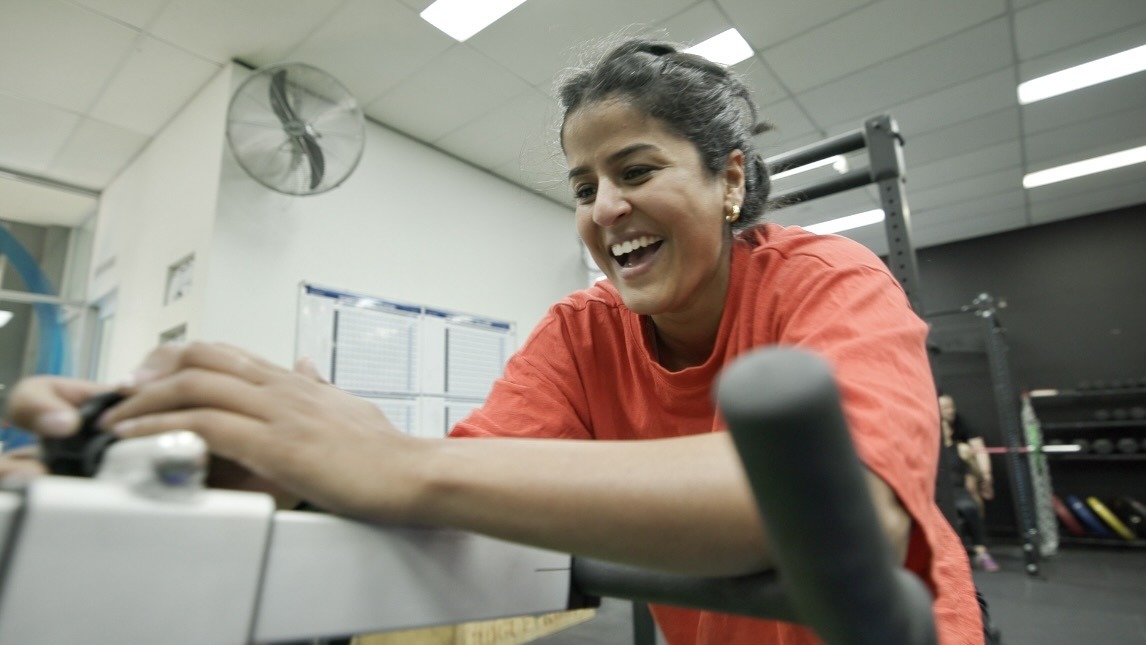
High-Intensity Interval Training (HIIT) has been making waves in the fitness world for its unparalleled ability to transform your body, muscles, and cardiovascular system in a remarkably short time. This workout approach is not just a trend; it’s a scientifically proven method that can bring about profound changes. In this blog post, we’ll dive deep into the science behind HIIT, exploring what it does to your body, muscles, and cardiovascular system.
The HIIT Revolution at REVOPT
See what we did there… 😉 HIIT is all about pushing your limits through short bursts of intense exercise followed by brief periods of recovery. The benefits of HIIT go beyond aesthetics, offering improved fitness and overall health. Here’s how it impacts your body:
1. Fat Loss and Weight Management
HIIT has gained immense popularity for its effectiveness in fat loss and weight management. During high-intensity intervals, your body burns a substantial number of calories. Additionally, it elevates your post-exercise oxygen consumption (EPOC), also known as the “afterburn effect,” which means your body continues to burn calories even after your workout. This makes HIIT an excellent choice for those aiming to shed extra pounds.
2. Muscle Building and Toning
While HIIT primarily focuses on cardio, it also engages your muscles. High-intensity intervals involve bodyweight exercises or the use of weights, which contribute to muscle building and toning. HIIT stimulates the release of human growth hormone (HGH), a powerful factor in muscle growth, ensuring you retain your lean muscle mass.
3. Improved Cardiovascular Health
HIIT is renowned for its remarkable impact on the cardiovascular system. By pushing your heart rate to the max during intense intervals, you improve your heart’s efficiency. This helps lower your risk of heart diseases, reduces blood pressure, and enhances your cardiovascular endurance.
4. Enhanced Metabolism
HIIT boosts your metabolism, making your body more efficient at burning calories. The “afterburn effect” ensures that you continue to burn calories for hours after your workout. This translates to efficient fat loss and weight management.
5. Time Efficiency
HIIT workouts are known for their brevity. You can achieve substantial results in just 20-30 minutes of intense training, making it an attractive option for those with busy schedules.
Now, let’s explore the fascinating science behind how HIIT affects your body, muscles, and cardiovascular system.
The Science Behind HIIT
1. Body Composition Changes
HIIT transforms your body composition in various ways:
a. Fat Loss: During high-intensity intervals, your body relies on stored fat for energy. As a result, your fat percentage decreases, and you become leaner.
b. Muscle Preservation: HIIT minimizes muscle loss during weight loss. Unlike traditional steady-state cardio, HIIT doesn’t break down muscle protein for energy.
c. Muscle Growth: The intense bursts of exercise stimulate muscle growth by triggering the release of HGH and testosterone.
d. Afterburn Effect: HIIT creates an oxygen deficit in the body, causing it to work harder to restore oxygen levels post-workout. This raises your resting metabolic rate, enhancing calorie burn.
2. Cardiovascular Adaptations
HIIT has a profound impact on your cardiovascular system:
a. Increased Stroke Volume: Stroke volume is the amount of blood ejected by the heart in one beat. HIIT enhances stroke volume, allowing your heart to pump more blood with each contraction. This improves your heart’s efficiency.
b. Lower Resting Heart Rate: Regular HIIT can lead to a lower resting heart rate, a sign of cardiovascular fitness. A lower heart rate indicates that your heart is working less to pump blood, reducing the risk of heart diseases.
c. Improved Blood Pressure: HIIT can lower both systolic and diastolic blood pressure. It helps improve blood vessel function and reduce artery stiffness, resulting in better overall cardiovascular health.
d. Enhanced VO2 Max: HIIT is a powerful tool for increasing VO2 max, which measures your body’s ability to utilize oxygen during exercise. A higher VO2 max is associated with better cardiovascular health and endurance.
3. Muscular Adaptations
HIIT has a remarkable influence on your muscles:
a. Improved Muscle Endurance: HIIT builds muscle endurance, allowing you to sustain high-intensity efforts for longer periods. This is especially beneficial for athletes and those who engage in sports.
b. Mitochondrial Biogenesis: HIIT triggers mitochondrial biogenesis, the process by which your body creates new mitochondria – the powerhouses of your cells. This leads to increased energy production within your muscle cells.
c. Enhanced Insulin Sensitivity: HIIT improves insulin sensitivity, making it easier for your muscles to take up glucose. This is significant for overall health and plays a role in preventing type 2 diabetes.
d. Muscle Oxygen Delivery: HIIT stimulates the development of new capillaries, small blood vessels that supply oxygen to muscle tissues. This improved oxygen delivery enhances muscle performance and recovery.
HIIT: Not Just for Athletes
While athletes have long relied on HIIT to gain a competitive edge, the science and benefits behind this training approach are accessible to everyone. Whether you’re an athlete aiming to elevate your performance or someone seeking better health and fitness, HIIT offers a comprehensive solution.
It’s important to note that HIIT should be approached with caution, especially if you’re new to intense exercise. Always warm up properly, listen to your body, and gradually increase the intensity to avoid overexertion or injury.
Conclusion
The science behind HIIT reveals the incredible impact it has on your body, muscles, and cardiovascular system. It’s a time-efficient, effective, and adaptable approach to transforming your fitness and overall health. Whether you’re striving for fat loss, muscle building, cardiovascular health, or enhanced endurance, HIIT is a game-changer.
So, don’t let the intensity of HIIT intimidate you. Embrace it, start at your own pace, and watch as it reshapes your body and elevates your fitness journey. HIIT is not just a workout; it’s a revolutionary approach that empowers you to achieve your fitness goals and lead a healthier, stronger life. Get ready to experience the remarkable changes that HIIT can bring to your body, muscles, and cardiovascular system.